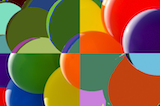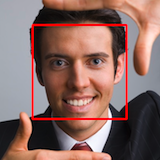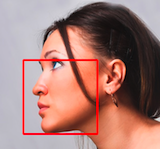OpenVL (the Open Vision Language) is a developer-friendly computer vision framework, hiding the complexity of sophisticated computer vision algorithms and their parameters through a description-based abstraction layer. Application developers describe a vision problem through a task-centred API, and OpenVL uses the description to provide a solution.
OpenVL is research software, with many bugs and features still to be implemented - it is not designed for use in a production environment. If you come across any bugs, please inform Gregor (include a description of the problem, and code if possible). Bear in mind that OpenVL is not directly supported and it may be a while before a fix is released.
OpenVL is distributed under a non-commercial license for academic use only. The license is available from http://www.openvl.org/Download/License.txt.
Notes
Contributors
Dr. Daesik Jang, Kunsan National University, Korea
Constant Thomas, TÚlÚcom Saint-Etienne, UniversitÚ Jean Monnet Saint-Etienne, France
Nicolas Pajnic, TÚlÚcom Saint-Etienne, UniversitÚ Jean Monnet Saint-Etienne, France
Lo´c Duron, TÚlÚcom Saint-Etienne, UniversitÚ Jean Monnet Saint-Etienne, France
Acknowledgements
SLIC Superpixels (http://ivrg.epfl.ch/research/superpixels) used with permission from Radhakrishna Achanta at EPFL.
Our research has been supported directly by the National Sciences and Engineering Research Council of Canada (NSERC-CRSNG) and Bell Canada.
Release Notes
*** 2013/07/01 OpenVL v0.1a ***
First release
OpenVL is research software, with many bugs and features still to be implemented - it is not designed for use in a production environment. If you come across any bugs, please inform Gregor (include a description of the problem, and code if possible). Bear in mind that OpenVL is not directly supported and it may be a while before a fix is released.
OpenVL is distributed under a non-commercial license for academic use only. The license is available from http://www.openvl.org/Download/License.txt.
Notes
- The release includes C++ headers and static library binaries
- Source code is not currently available for the OpenVL libraries
- This first release provides solutions to image segmentation; other vision problems will be released as we progress
- This release is a desktop implementation; mobile and server implementations of the OpenVL API are currently under active development
- This release supports OS X (Xcode/GCC), Windows (Visual Studio 2010) and Linux (GCC)
- Contributions are welcome: either in the form of a collaboration or as an algorithm donation for a particular problem domain; contact Gregor for more details
- We are looking for industry partners to help develop OpenVL: if you are interested in a partnership, please contact Gregor or Sidney (details above)
Contributors
Dr. Daesik Jang, Kunsan National University, Korea
Constant Thomas, TÚlÚcom Saint-Etienne, UniversitÚ Jean Monnet Saint-Etienne, France
Nicolas Pajnic, TÚlÚcom Saint-Etienne, UniversitÚ Jean Monnet Saint-Etienne, France
Lo´c Duron, TÚlÚcom Saint-Etienne, UniversitÚ Jean Monnet Saint-Etienne, France
Acknowledgements
SLIC Superpixels (http://ivrg.epfl.ch/research/superpixels) used with permission from Radhakrishna Achanta at EPFL.
Our research has been supported directly by the National Sciences and Engineering Research Council of Canada (NSERC-CRSNG) and Bell Canada.
Release Notes
*** 2013/07/01 OpenVL v0.1a ***
First release
- Image segmentation
- Desktop implementation (designed for use on desktop/laptop systems)
- OSX-Xcode, Windows-VisualStudio and Linux-GCC supported









